Ever wondered how apps such as Instagram or TikTok become billion-dollar empires?
Although social media platforms provide free access to users, these apps are currently among the most profitable ventures. From advertisements to in-app buys, they employ strong monetization tactics that leverage user behavior, data, and activity like never before. As user populations grow and digital ecosystems become more extensive, understanding how these apps generate revenue isn’t just interesting — it’s important for founders, marketers, and even ordinary users.
In this blog, we’ll explore the booming state of the social media market, break down the top money-making models, and reveal exactly how giants like Instagram make their billions. Let’s dive in.
Social Media Industry Current Scenario
The social media sector keeps developing at a stunning rate. As of 2025, the global market value will amount to $286.53 billion, having increased from $252.95 billion in 2024, representing a strong 13.3% CAGR. The increase is propelled by the increased penetration of the internet, rising smartphone usage, and increased demand for visual and interactive content.
Looking ahead, the momentum isn’t slacking off. The market is anticipated to rise to $466.56 billion by 2029, with a continuous 13.0% CAGR. As more consumers and organizations access social platforms to build connections, digital marketing, and generate business, the space is transforming into a multi-billion-dollar digital economy.
Why Understanding Social Media Monetization Matters?
Now that we have understood the current growth scenario of the social media market, let’s move on to why you must understand social media monetization. By using platforms strategically, you can establish a successful business, secure brand partnerships, and leverage your audience and expertise to make money. Beyond the potential to earn money, monetization aids in establishing brand credibility, enhancing visibility, and creating scalable growth opportunities.
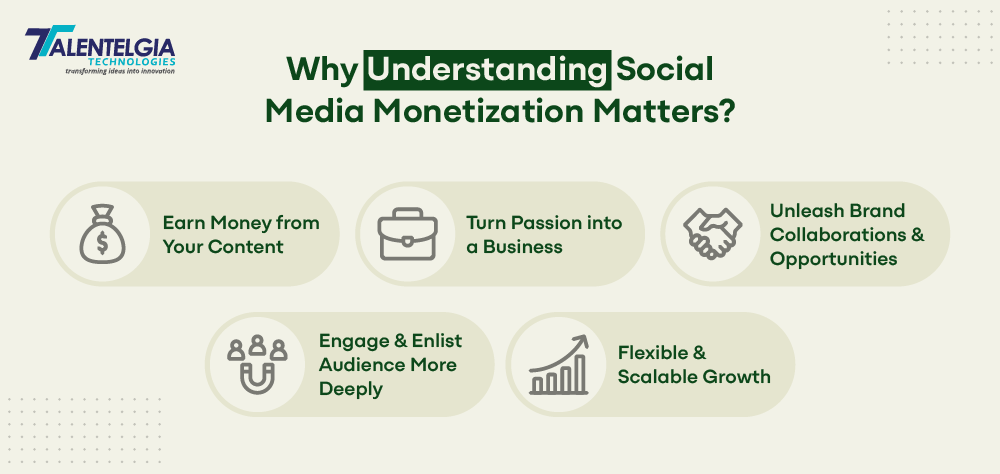
Here’s why knowing social media monetization is important:
1. Earn Money from Your Content
Monetizing your social media profiles provides you with the opportunity to earn money directly from your content. Through ad revenue, affiliate marketing, or sponsored posts, social media monetization converts engagement into money.
2. Turn Passion into a Business
Monetization is not merely about generating revenue—it’s about leveraging your passions or expertise into a viable business. This enables you to monetize your creativity, skills, and knowledge, allowing you to build a profitable business.
3. Brand Collaborations and Opportunities
Monetizing your social media creates opportunities for brand collaborations. These collaborations enable you to extend your reach, gain more visibility, and establish yourself as a trusted voice in your niche.
4. Engage and Enlist Audience More Deeply
By providing content that is reserved, paid membership, or additional features, you can engage with your audience on a deeper level. Monetization not only increases revenue but also fosters long-term commitment and engagement.
5. Flexible and Scalable Growth
Social media monetization offers scalable revenue generation options that adapt to your goals. Whether you’re looking for a side hustle or a full-time income, monetization provides the flexibility to grow your online business at your own pace.
How Social Media Sites Earn Profit?
Social media apps are free to download, but not free to operate. So, how do Instagram, TikTok, and YouTube rake in billions annually? The secret is in their clever, diversified monetization strategies. Let’s examine them one by one.
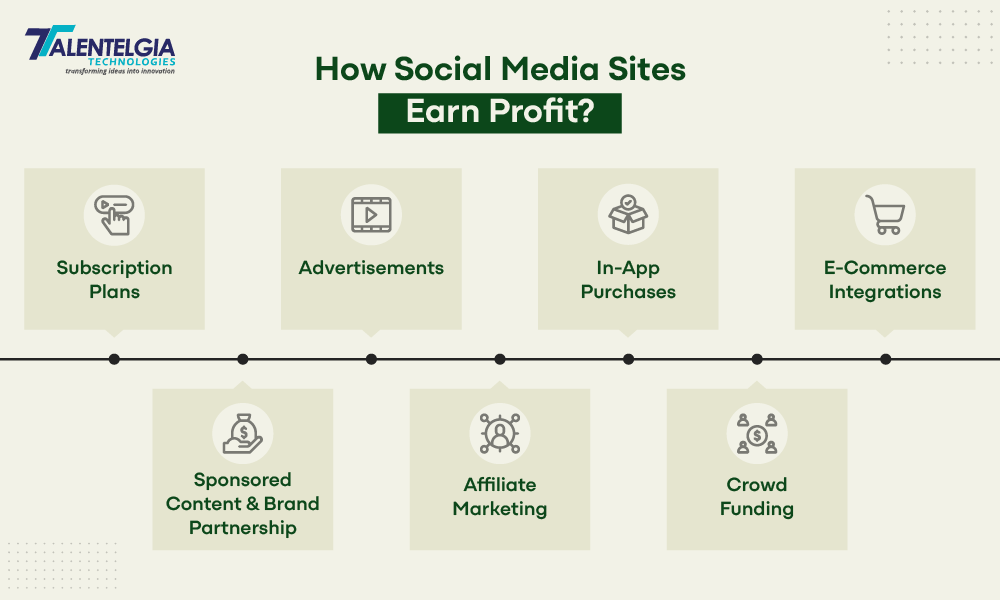
1. Subscription Plans
Subscription plans are becoming a widely used method for social media websites to make money. These platforms offer premium features or special content in return for a recurring fee. These are meant for people who desire greater control, improved functionality, or an enriched experience than that provided for free.
What Do Subscriptions Provide?
Users may receive access to:
- Exclusive content or early access to posts
- Greater profile exposure or richer tools (e.g., insights, analytics)
- Offline availability and downloadable content
- Badge verification or identity increases
- Customization capabilities and extra storage
Why Platforms Employ Subscription Models?
- Predictable and Regular Revenue: Subscriptions provide a steady and reliable income each month, unlike ads or one-time purchases, which can be less predictable.
- Enhanced User Retention: Subscribing users are more likely to stay engaged and committed, lowering churn.
- Monetizable at Scale: As the number of users increases, so does recurring revenue.
- Improved User Experience: Members generally get a neater interface, quicker features, or VIP treatment, which promotes prolonged use.
Ideal For:
Platforms providing professional utility, community recognition, or exclusive access, including:
- LinkedIn Premium: Professional networking features, job insights, and messaging features.
- YouTube Premium: Ad-free video playback, background play, and special video content.
- X Premium (previously Twitter Blue): Increased post visibility, editing features, and account verification.
2. Advertisements
In terms of monetization, advertising is the pillar of most social media. These apps make billions by assisting brands to reach highly engaged, targeted users who spend hours scrolling, watching, and engaging daily.
How Advertising Drives Social Media Profits?
- Data-Driven Targeting: Sophisticated algorithms utilize user behavior, interests, and demographics to deliver hyper-relevant ads.
- Sponsored Content & Boosted Posts: Brands pay to boost posts or run product campaigns to increase reach and drive action.
Real Life Example: Meta’s Ad-Driven Growth
Meta (previously Facebook Inc.) derives most of its income from advertising. Facebook and Instagram enable businesses to target specialized audiences with pinpoint accuracy, due to real-time data, tracking of user behavior, and engagement metrics.
As a result, social media is a more efficient advertisement channel compared to traditional media, providing measurable ROI and quicker access to customers.
3. In-App Purchases
In-app purchases help social apps make money, especially those focused on entertainment, live experiences, or creator content. These small transactions let users improve their experience, stand out, or connect better with creators.
What Do Users Get to Buy In-App?
- Virtual gifts or emojis on live streams
- Special effects or content creation filters
- Coins, tokens, or credits to help creators
- Badges or shoutouts to become visible
- Premium stickers, avatars, or animations
Why Platforms Utilize In-App Purchases:
User-Powered Monetization: Influencers and creators get paid directly by fans, making the platform more engaging.
Engagement Boost: In-app products drive engagement in live streams, stories, or community aspects.
Low Barrier Revenue: Microtransactions add up to substantial profits without interrupting the user experience.
Emotional Value: Fans feel more connected when they can support their favorite creators directly.
Best For:
Interactive and creator-centric platforms like:
- TikTok: Coins are purchased to give virtual gifts in live streams.
- Instagram: Badges enable followers to support in real time.
- Snapchat: Tokens provide access to premium content and lens improvements.
4. E-Commerce Integrations
E-commerce integrations have turned social media platforms into virtual shopping malls, allowing users to find and buy products without ever exiting the app. Instagram, TikTok, and Pinterest now provide smooth “shop-as-you-scroll” experiences that merge content and commerce seamlessly.
What Do E-Commerce Integrations Provide?
These capabilities enable users to:
- Explore product catalogs in profiles or stories
- Tap on tagged products in posts and videos
- See real-time pricing, reviews, and product information
- Add to cart and check out within the app
- Mark products as favorites to view later
Why Platforms Implement E-Commerce Features:
- More Time Spent on Platform: People spend more time when discovery and purchase occur in one location.
- Monetization for Brands: Social apps make money by taking a percentage of every sale or charging for entry into shops.
- Improved Ad Targeting: Shopping activity improves ad relevance and ROI for brands.
- Frictionless User Experience: One-tap checkouts cut drop-offs in half and increase conversions.
Best For:
Visual and lifestyle-centered platforms such as:
- Instagram: Shoppable stories, story stickers, and in-app stores.
- TikTok: Product links in videos, live shopping, and affiliate features.
- Pinterest: Combined catalogs, dynamic prices, and personalized suggestions.
5. Sponsored Content & Brand Partnership
Brand partnerships and sponsored content are tools that enable brands to produce genuine, engaging content that resonates with their audiences while driving sales of their products, making money for platforms through influencer or creator partnerships. Such partnerships provide useful exposure and establish credibility with targeted audiences.
Brand partnerships and sponsored content provide social media platforms with a valuable revenue source by enabling brands to produce content that is native, authentic, and valuable to users, while still advertising their products.
What Do Sponsored Partnerships Provide?
These partnerships enable brands to:
- Partner with creators or influencers for branded content
- Incorporate products and messaging within lifestyle content
- Roll out sponsored trends or challenges (very popular on TikTok)
- Produce educational, inspirational, or engaging brand narratives
- Target niche audiences by interest and behavior
Why Platforms Use Sponsored Content:
- Authentic Engagement: Sponsored content is more natural, resulting in stronger interaction rates.
- Creative Flexibility: Brands can match messaging with trends, style, and platform culture.
- Non-Disruptive Experience: Less intrusive than display ads, engaging users without distraction.
- Mutual Value: Both enhance user experience and brand reach through high-quality, relevant content.
Ideal For:
Visually-driven, creator-centered platforms such as:
- Instagram: Influencer stories, reels, and branded carousels
- TikTok: Hashtag challenges, duet campaigns, and creator integrations
- Pinterest: Creators’ curated idea boards and sponsored pins
6. Affiliate Marketing
Affiliate marketing is a wise monetization tactic whereby social media platforms make money through the promotion of third-party services or products using affiliate links that generate traffic or leads, or sales.
How Affiliate Marketing Works?
Platforms or creators place affiliate links into:
- Swipe-up stories, reels, or videos
- Bio links or “link in description” placements
- Product reviews and recommendation content
- Tutorials and unboxing featuring tagged products
Why Platforms Use Affiliate Marketing?
- Low Overhead, High Return: No products to manage or fulfillment to handle—just promote and profit.
- Passive Revenue Stream: Links keep generating revenue with continued interaction after setup.
- Scalable Reach: Platforms leverage their huge user bases and creator networks to promote varied product offerings.
- Win-Win Model: Brands receive sales, creators receive commissions, and platforms reap the traffic and engagement.
Ideal For:
Content-dense platforms where creators, bloggers, and influencers generate traffic and engagement, including:
- Instagram: Shoppable posts, story links, and influencer product recommendations
- YouTube: Video descriptions with affiliate links to technology, fashion, or lifestyle products
- Pinterest: Affiliate pins with embedded product links
7. Crowdfunding
Crowdfunding allows users to directly support their favorite creators with tips, donations, or memberships, adding a community-driven revenue stream for social media platforms.
How Crowdfunding Works?
Platforms integrate monetization tools that allow:
- One-time tips or donations to content creators
- Recurring memberships for access to exclusive content
- Tier-based benefits that increase fan engagement
- Creator shoutouts, behind-the-scenes access, or early content previews
Why Platforms Use Crowdfunding?
- Boosts Creator Motivation: Financial support helps creators consistently produce high-quality content.
- Strengthens Community: Builds deeper creator-fan relationships through direct support and interaction.
- Additional Revenue Channel: Diversifies monetization beyond ads or commerce models.
- Customizable Tiers: Offers flexible pricing and perks based on user engagement levels.
Ideal For?
Platforms that prioritize creator-first experiences and community engagement, such as:
- YouTube: “Join” button for channel memberships offering exclusive videos, badges, and perks
- Patreon: Tiered subscription-based crowdfunding across various content types—art, podcasts, music, and more
- Ko-fi & Buy Me a Coffee: Simple, one-time tip platforms with growing traction among micro-creators
Case Study: How Instagram Makes Money?
When Meta (at the time, Facebook) bought Instagram in April 2012 for a staggering $1 billion in cash and stock, Wall Street wasn’t sure what to think. Instagram was a young photo-sharing app with no revenue, only 13 employees, and a user base still getting its bearings. Critics labeled it irresponsible. A risk. A dud.
Leap to 2023, and one of Meta’s most successful deals is Instagram, which has brought an estimated $39 billion in revenues per year into Meta’s books, accounting for close to a third of its total revenues. A seemingly dashing gamble, this proved one of the smartest moves tech ever made.
From Startup to Powerhouse: The Instagram Growth Timeline
- 2012: Bought for $1B with no monetization plan
- 2018: Reaches $100 billion in estimated worth and 1 B+ active users
- 2019: Earns $20B in ad revenue—more than YouTube
- 2023: Estimated $39B in ad revenue, accounting for ~29% of Meta’s revenue
Instagram’s Contribution to Meta: The Numbers That Matter
| Year | Meta Total Revenue | Instagram Contribution | % of Meta’s Revenue |
|---|---|---|---|
| 2018 | $55.8B | $11.3B | 20% |
| 2019 | $70.7B | $17.9B | 25% |
| 2020 | $85.9B | $22.0B | 25% |
| 2021 | $117.9B | $32.4B | 27% |
| 2022 | $116.6B | $33.0B (est.) | 28% |
| 2023 | $134.9B | $39.0B (est.) | 29% |
What Makes an Instagram Expert In Social Media Monetization?
1. A Youth-First Audience
Instagram is Gen Z and Millennials’ home ground. In 2023, about 70% of teenagers between 15 and 17 used the platform actively. That’s an advertiser’s fantasy—a huge, impressionable, and mobile-first user base.
2. Visual-First Engagement
Being a photo and video-led platform, Instagram is best suited for brand storytelling. From Reels to Stories to Shopping—each feature encourages interaction and conversion.
3. Click-Worthy Behavior
In 2019, more than 130 million users clicked on commercial links in the app each month. Instagram doesn’t simply host ads—it takes action.
4. Creator-Friendly Tools
From shopping tags to affiliate programs, Instagram makes commerce and content blend seamlessly together. This makes the app sticky, scalable, and shoppable.
Is Instagram Profitable?
Absolutely. Though Meta doesn’t disclose individual app-level revenue, the figures tell the tale. Racking up billions of revenue directly credited to Instagram ad sales, the platform isn’t merely profitable—it’s indispensable.
Does Instagram Out-Earn YouTube?
Based on multiple market trends, Instagram outranked YouTube in ad revenue annually. In 2019 alone, it made $20 billion, compared to $15 billion made by YouTube. Even though YouTube occupies a singular space in long-form video, Instagram leads in short-form, bite-sized content that is simpler to monetize on a large scale.
Conclusion
Social media sites are free to use, but monetization techniques—ads, subscriptions, in-app purchases, brand deals, affiliate marketing, and so on provide a boost to their existing models. These apps do not simply generate revenue; they construct scalable revenue streams that flourish on user engagement, content development, and technological advancement. Instagram, TikTok, and others have demonstrated that with the proper combination of engagement and monetization, even a basic app concept can grow into an international business empire.
Whether you are a startup entrepreneur, marketer, or simply interested in the online space, knowing how these apps make billions is your starting point to applying the same principles to your own online business.


 Healthcare App Development Services
Healthcare App Development Services
 Real Estate Web Development Services
Real Estate Web Development Services
 E-Commerce App Development Services
E-Commerce App Development Services E-Commerce Web Development Services
E-Commerce Web Development Services Blockchain E-commerce Development Company
Blockchain E-commerce Development Company
 Fintech App Development Services
Fintech App Development Services Fintech Web Development
Fintech Web Development Blockchain Fintech Development Company
Blockchain Fintech Development Company
 E-Learning App Development Services
E-Learning App Development Services
 Restaurant App Development Company
Restaurant App Development Company
 Mobile Game Development Company
Mobile Game Development Company
 Travel App Development Company
Travel App Development Company
 Automotive Web Design
Automotive Web Design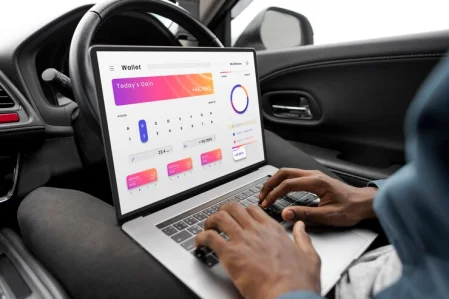
 AI Traffic Management System
AI Traffic Management System
 AI Inventory Management Software
AI Inventory Management Software
 AI Software Development
AI Software Development  AI Development Company
AI Development Company  AI App Development Services
AI App Development Services  ChatGPT integration services
ChatGPT integration services  AI Integration Services
AI Integration Services  Generative AI Development Services
Generative AI Development Services  Natural Language Processing Company
Natural Language Processing Company Machine Learning Development
Machine Learning Development  Machine learning consulting services
Machine learning consulting services  Blockchain Development
Blockchain Development  Blockchain Software Development
Blockchain Software Development  Smart Contract Development Company
Smart Contract Development Company  NFT Marketplace Development Services
NFT Marketplace Development Services  Asset Tokenization Company
Asset Tokenization Company DeFi Wallet Development Company
DeFi Wallet Development Company Mobile App Development
Mobile App Development  IOS App Development
IOS App Development  Android App Development
Android App Development  Cross-Platform App Development
Cross-Platform App Development  Augmented Reality (AR) App Development
Augmented Reality (AR) App Development  Virtual Reality (VR) App Development
Virtual Reality (VR) App Development  Web App Development
Web App Development  SaaS App Development
SaaS App Development Flutter
Flutter  React Native
React Native  Swift (IOS)
Swift (IOS)  Kotlin (Android)
Kotlin (Android)  Mean Stack Development
Mean Stack Development  AngularJS Development
AngularJS Development  MongoDB Development
MongoDB Development  Nodejs Development
Nodejs Development  Database Development
Database Development Ruby on Rails Development
Ruby on Rails Development Expressjs Development
Expressjs Development  Full Stack Development
Full Stack Development  Web Development Services
Web Development Services  Laravel Development
Laravel Development  LAMP Development
LAMP Development  Custom PHP Development
Custom PHP Development  .Net Development
.Net Development  User Experience Design Services
User Experience Design Services  User Interface Design Services
User Interface Design Services  Automated Testing
Automated Testing  Manual Testing
Manual Testing  Digital Marketing Services
Digital Marketing Services 
 Ride-Sharing And Taxi Services
Ride-Sharing And Taxi Services Food Delivery Services
Food Delivery Services Grocery Delivery Services
Grocery Delivery Services Transportation And Logistics
Transportation And Logistics Car Wash App
Car Wash App Home Services App
Home Services App ERP Development Services
ERP Development Services CMS Development Services
CMS Development Services LMS Development
LMS Development CRM Development
CRM Development DevOps Development Services
DevOps Development Services AI Business Solutions
AI Business Solutions AI Cloud Solutions
AI Cloud Solutions AI Chatbot Development
AI Chatbot Development API Development
API Development Blockchain Product Development
Blockchain Product Development Cryptocurrency Wallet Development
Cryptocurrency Wallet Development About Talentelgia
About Talentelgia  Our Team
Our Team  Our Culture
Our Culture 
 Healthcare App Development Services
Healthcare App Development Services Real Estate Web Development Services
Real Estate Web Development Services E-Commerce App Development Services
E-Commerce App Development Services E-Commerce Web Development Services
E-Commerce Web Development Services Blockchain E-commerce
Development Company
Blockchain E-commerce
Development Company Fintech App Development Services
Fintech App Development Services Finance Web Development
Finance Web Development Blockchain Fintech
Development Company
Blockchain Fintech
Development Company E-Learning App Development Services
E-Learning App Development Services Restaurant App Development Company
Restaurant App Development Company Mobile Game Development Company
Mobile Game Development Company Travel App Development Company
Travel App Development Company Automotive Web Design
Automotive Web Design AI Traffic Management System
AI Traffic Management System AI Inventory Management Software
AI Inventory Management Software AI Software Development
AI Software Development AI Development Company
AI Development Company ChatGPT integration services
ChatGPT integration services AI Integration Services
AI Integration Services Machine Learning Development
Machine Learning Development Machine learning consulting services
Machine learning consulting services Blockchain Development
Blockchain Development Blockchain Software Development
Blockchain Software Development Smart contract development company
Smart contract development company NFT marketplace development services
NFT marketplace development services IOS App Development
IOS App Development Android App Development
Android App Development Cross-Platform App Development
Cross-Platform App Development Augmented Reality (AR) App
Development
Augmented Reality (AR) App
Development Virtual Reality (VR) App Development
Virtual Reality (VR) App Development Web App Development
Web App Development Flutter
Flutter React
Native
React
Native Swift
(IOS)
Swift
(IOS) Kotlin (Android)
Kotlin (Android) MEAN Stack Development
MEAN Stack Development AngularJS Development
AngularJS Development MongoDB Development
MongoDB Development Nodejs Development
Nodejs Development Database development services
Database development services Ruby on Rails Development services
Ruby on Rails Development services Expressjs Development
Expressjs Development Full Stack Development
Full Stack Development Web Development Services
Web Development Services Laravel Development
Laravel Development LAMP
Development
LAMP
Development Custom PHP Development
Custom PHP Development User Experience Design Services
User Experience Design Services User Interface Design Services
User Interface Design Services Automated Testing
Automated Testing Manual
Testing
Manual
Testing About Talentelgia
About Talentelgia Our Team
Our Team Our Culture
Our Culture
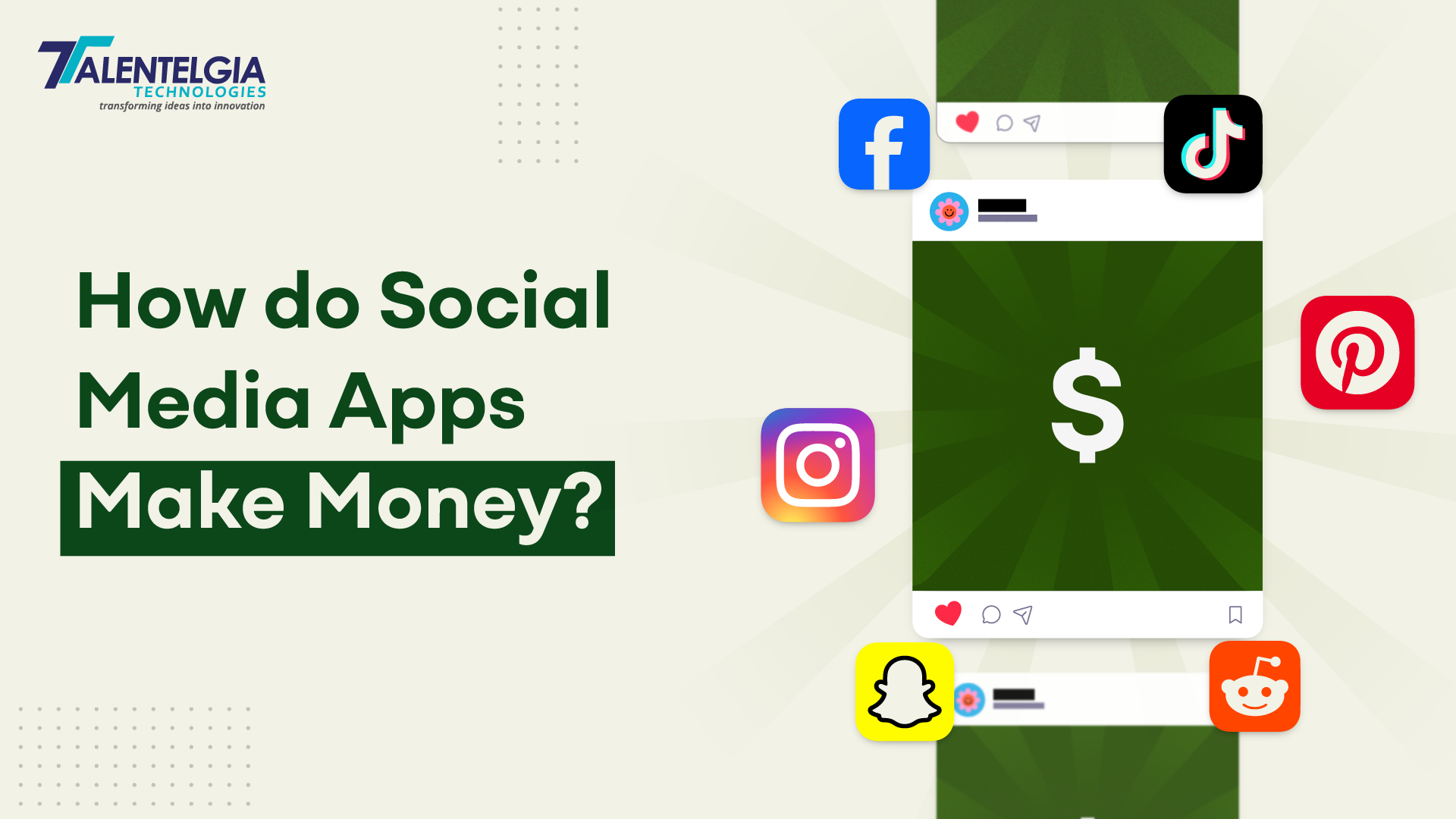




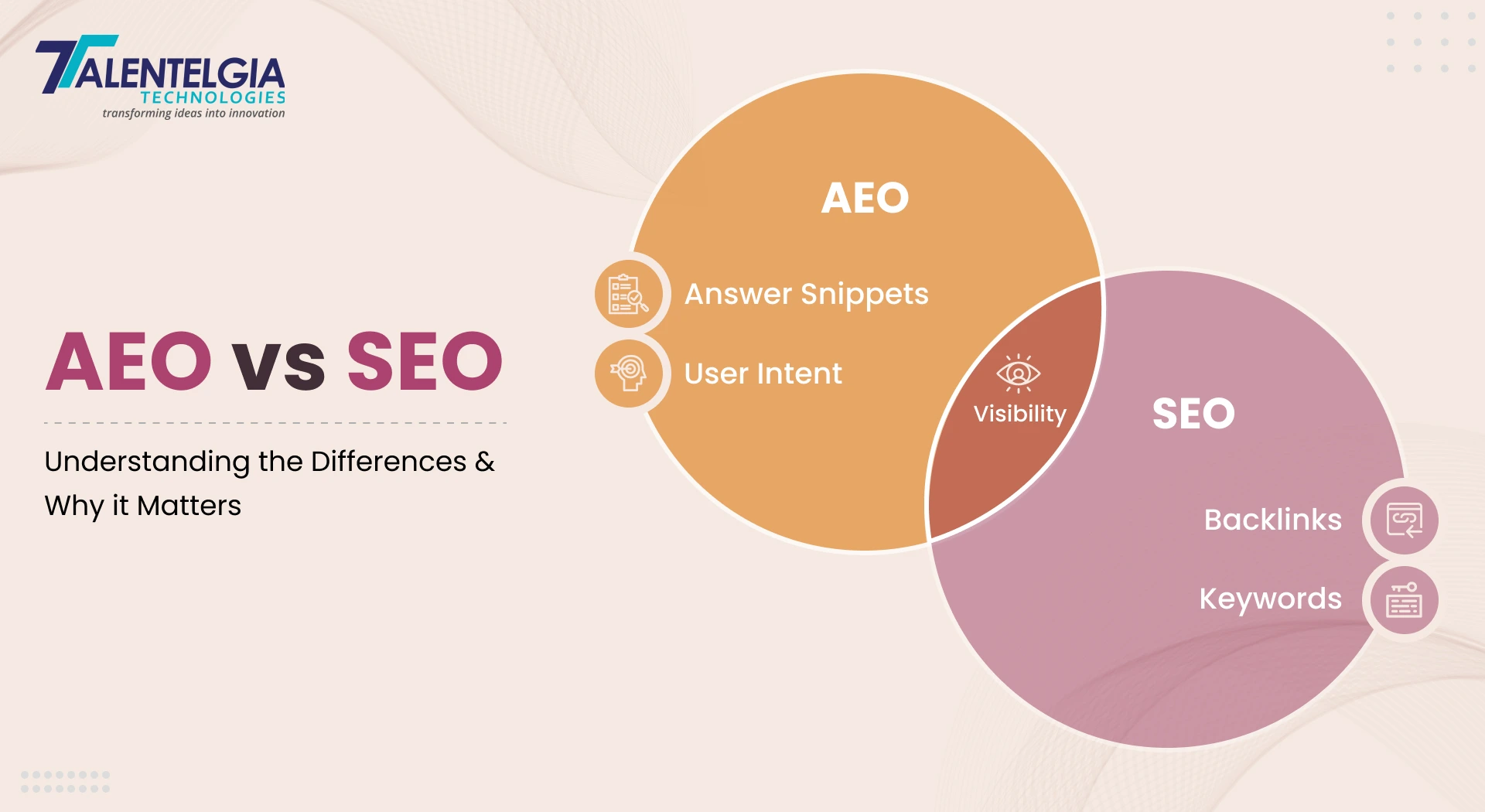











 Write us on:
Write us on:  Business queries:
Business queries:  HR:
HR: 




